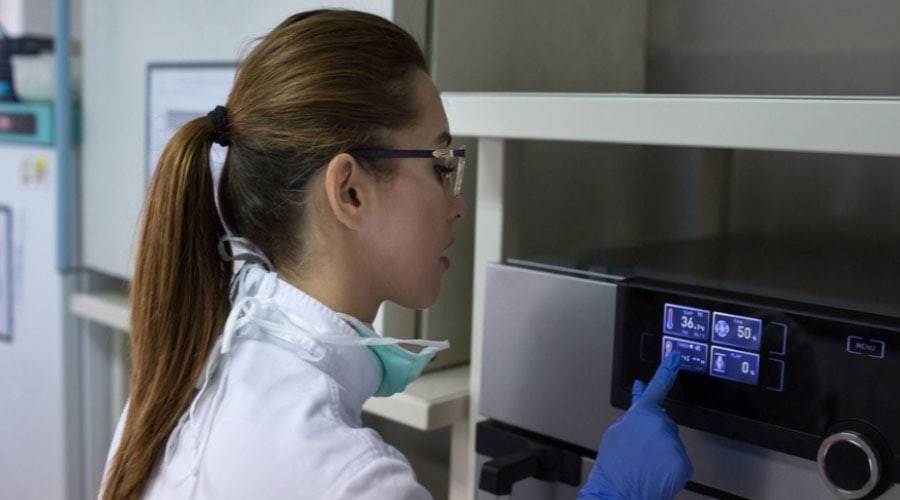Refrigerated incubators can serve a variety of purposes. The two types of refrigerated incubators that you can get are ones that use a vapor compressor cooling system and ones that use a Peltier cooling system. Either type of chilled incubator can work well for you, depending on what you want from your incubator.
The vapor compressor refrigerated incubator is considered the conventional type of incubator. However, these two types of refrigerated incubators operate differently. It is important to cover these differences in function before moving any further. Read on to learn more about these incubators and how a refrigerator incubator using the vapor compressor cooling system differs from one using a Peltier cooling system.
How Does a Vapor Compressor Refrigerated Incubator Work?
The vapor compressor cooling system is quite common in many types of refrigerators, including ones that you can use in your home. The first step in the process is that the refrigerant flows through the refrigerator’s compressor and this increases the refrigerant’s pressure. The refrigerant then goes through the condenser and condenses from vapor to liquid, giving off the heat while doing so. After that, the refrigerant flows through the incubator’s expansion valve and experiences a decrease in pressure.
The refrigerant then flows into the incubator’s evaporator. The refrigerant in the incubator draws heat from the evaporator and this vaporizes the refrigerant. The incubator’s evaporator draws heat from whatever area is going to be cooled.
The previously vaporized refrigerant then returns to the compressor and the cycle starts over again. This cycle happens in both incubators and in other refrigerators that use a compression refrigeration system. While this system does work effectively, the Peltier cooling system works quite differently.
How Does a Peltier System Refrigerated Incubator Function?
One important difference between a Peltier-style refrigerated incubator is that it does not need liquid refrigerant, unlike a vapor compressor-style refrigerated incubator. The Peltier-style incubator operates using the thermoelectric effect to make the cooled and heated sides of the incubator. Peltier-style incubators use semiconductors in order to accomplish cooling. The first step in how Peltier-style incubators work is that the incubator receives direct current.
When this happens, the direct current goes through two different kinds of semiconductors that are a part of the Peltier module. As a result of this, the heat sink that is on one side warms up and the other side cools down. This cools down the air circulating in the incubator and cools the refrigerated space inside the incubator as well.
What Are the Advantages and Disadvantages of the Peltier-Style Incubator?
Either kind of chilled incubator can work well for you, depending on your needs. One advantage of the Peltier-style incubator is that it does not have moving parts. This allows the incubator to bypass mechanical wear and tear issues. Additionally, the lack of moving parts in the Peltier-style incubator means that there is a lower probability that the system will fail.
This type of refrigerator incubator also does not need much maintenance, largely due to its lack of moving parts. Another advantage of the Peltier-style incubator is that it does not vibrate and is quiet since it does not have any moving parts. You also do not have to worry about making sure that Peltier-style cooled incubators have enough refrigerant, since these incubators do not use refrigerant at all. Peltier-style chilled incubators are easier for you to replace compared to compressor-style chilled incubators and Peltier-style chilled incubators are less complex, as well.
Peltier-style cooled incubators do have disadvantages, though. They generally cool more slowly than compressor-based chilled incubators. Peltier-style cooled incubators are also much less energy-efficient when compared to compressor-based chilled incubators.
What Are the Advantages and Disadvantages of the Compressor-Style Incubator?
One advantage of the compressor-style incubator is that it is much more energy-efficient than the Peltier-style incubator. Additionally, the compressor-style incubator can get rid of large amounts of heat and perform cooling with only a small flow of refrigerant. The compressor-style incubator also has the advantage of being able to provide lower temperatures than the Peltier-style incubator. In this case, lower temperatures mean temperatures below 10 degrees Celsius.
Of course, the compressor-style incubator comes with disadvantages. One disadvantage is that compressor-style incubators might vibrate and they can be noisy. You also have to position compressor-style incubators properly or they might not work correctly. Vapor compressor chilled incubators and Peltier system chilled incubators can both be good options, but you should consider these differences carefully.








